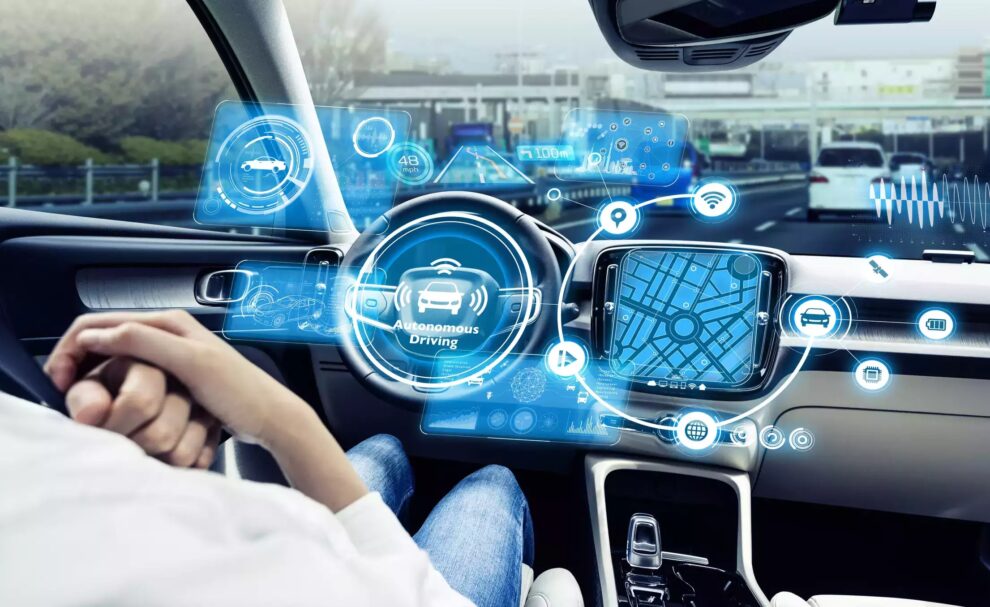Introduction
In today’s changing world driver education is experiencing significant transformations due to technological advancements. The integration of technology with driver education does not improve the learning experience but also revolutionizes it. This article explores how technology plays a role in driver education and its contribution to promoting driving practices. From advanced vehicle features to innovative online learning platforms we delve into how technology’s shaping the future of driving.
The Advancement of Vehicle Technology and Its Influence on Driver Education
Over the two decades there have been advancements in vehicle technology that have had a profound impact on driver safety and education.
Autonomous and Semi Autonomous Vehicles
One notable development has been the emergence of semi autonomous vehicles. Features like cruise control, braking assistance and lane keeping assist are no longer confined to science fiction. Have become a reality. These technologies have the potential to significantly reduce road accidents caused by error. However their effectiveness depends on drivers understanding and proper utilization. This is where updated driver education programs come into play by incorporating teachings about these technologies to ensure that drivers can use them effectively thus enhancing road safety.
Telematics and Real Time Data
Another remarkable advancement is the utilization of telematics in vehicles. This technology allows for real time data collection and analysis related to driving behavior performance metrics and vehicle diagnostics. By leveraging this data in driver education programs instructors can provide feedback tailored to individual drivers needs, for improved road safety.
The transmission of real time data, about vehicle usage, driver behavior and road conditions has proven to be a tool in driver education. By analyzing this data instructors can personalize their teaching methods to cater to the needs of each student. They can focus on areas that require improvement based on tendencies, such as braking. Instructors can offer targeted training to enhance this aspect if learners tend to brake
The rise in popularity of Electric Vehicles (EVs) has also impacted driver education. EVs have characteristics in terms of handling, acceleration and maintenance compared to vehicles. Therefore driver education programs must adapt by incorporating training for EVs. It is crucial for new drivers to understand the intricacies of operating an EV especially considering their increasing prevalence on the roads.
The digital era has brought changes in fields, including education and driver instruction. Online drivers ed has gained popularity due to its dynamic approach to learning how to drive.
One key advantage of online drivers ed is its accessibility. Students at any time can easily access learning materials. From anywhere they are located. This flexibility is particularly beneficial for individuals, with lives as it allows them to learn at their pace.
One of the features found in drivers education platforms is the availability of tools, such as videos, animations and quizzes. These engaging resources cater to learning styles. Help students grasp concepts more effectively. Moreover these platforms have the advantage of updating their content to ensure that learners are kept up to date with driving laws and best practices.
A fascinating development in driver training is the utilization of driving simulators. These simulators provide learners with an environment where they can experience and adapt to driving scenarios.
What makes simulators better is their ability to offer a risk free learning environment. Learners can practice driving in conditions like traffic, bad weather or emergency situations without any real world risks involved. The experience gained from using driving simulators proves valuable for drivers as it helps them become better prepared to face real life driving challenges within a controlled setting.
Assessing and developing skills
Driving simulators serve a purpose; they not only provide an opportunity for practice but also act as powerful tools for evaluating drivers skills. Instructors can closely observe how students react in scenarios and offer feedback and guidance accordingly. This personalized approach enables them to identify areas that require training and focus on improving those skills.
Leveraging mobile and web applicationsIn today’s driver education, mobile and web applications play a role, in providing resources and practice opportunities outside of the traditional classroom setting.
Continuous Learning and Practice
Specialized drivers education apps allow learners to conveniently study and practice at any time and from anywhere. These apps often include features such as practice tests, educational games and progress tracking mechanisms, which make the learning experience more interactive and easily accessible.
Tailored Feedback for Personal Improvement
Drivers education apps utilize data analytics to provide feedback to learners. They track progress over time highlighting areas where improvement is needed. This enables students to focus their efforts on aspects of driving that require development.
Looking ahead to the future we can expect emerging technologies like augmented reality (AR) virtual reality (VR) and artificial intelligence (AI) to have an impact on driver education.
The field of driver training is embracing these technologies by offering environments through AR and VR for learners to experience lifelike driving scenarios. Additionally AI can personalize the learning process by adapting to strengths and weaknesses over time.
As vehicle technology continues to advance it is crucial for driver education to keep pace with these changes. Future drivers will not need to learn driving skills. Also how to effectively interact with increasingly advanced vehicle technologies and automation.
Conclusion
Ongoing education and adaptation are crucial, in the changing world of driving and vehicle technology. To keep the roads safe drivers need to stay updated on the advancements in vehicles. Get Drivers Ed plays a pivotal role in providing drivers with information about features and safety systems, as they offer comprehensive online driver education courses. It is important for both experienced drivers to stay informed about changes in road regulations and driving standards through refresher courses enabling them to adapt their driving practices to the evolving landscape. In this century integrating technology into driver education is essential. As technology continues to advance we must also evolve our approach to teaching and learning how to drive. By embracing these changes we can ensure that new drivers are well prepared, responsible and capable of navigating the roads.












